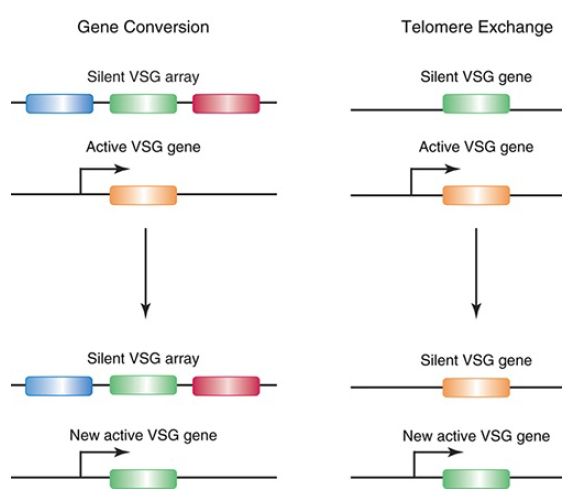

النبات

مواضيع عامة في علم النبات

الجذور - السيقان - الأوراق

النباتات الوعائية واللاوعائية

البذور (مغطاة البذور - عاريات البذور)

الطحالب

النباتات الطبية


الحيوان

مواضيع عامة في علم الحيوان

علم التشريح

التنوع الإحيائي

البايلوجيا الخلوية


الأحياء المجهرية

البكتيريا

الفطريات

الطفيليات

الفايروسات


علم الأمراض

الاورام

الامراض الوراثية

الامراض المناعية

الامراض المدارية

اضطرابات الدورة الدموية

مواضيع عامة في علم الامراض

الحشرات


التقانة الإحيائية

مواضيع عامة في التقانة الإحيائية


التقنية الحيوية المكروبية

التقنية الحيوية والميكروبات

الفعاليات الحيوية

وراثة الاحياء المجهرية

تصنيف الاحياء المجهرية

الاحياء المجهرية في الطبيعة

أيض الاجهاد

التقنية الحيوية والبيئة

التقنية الحيوية والطب

التقنية الحيوية والزراعة

التقنية الحيوية والصناعة

التقنية الحيوية والطاقة

البحار والطحالب الصغيرة

عزل البروتين

هندسة الجينات


التقنية الحياتية النانوية

مفاهيم التقنية الحيوية النانوية

التراكيب النانوية والمجاهر المستخدمة في رؤيتها

تصنيع وتخليق المواد النانوية

تطبيقات التقنية النانوية والحيوية النانوية

الرقائق والمتحسسات الحيوية

المصفوفات المجهرية وحاسوب الدنا

اللقاحات

البيئة والتلوث


علم الأجنة

اعضاء التكاثر وتشكل الاعراس

الاخصاب

التشطر

العصيبة وتشكل الجسيدات

تشكل اللواحق الجنينية

تكون المعيدة وظهور الطبقات الجنينية

مقدمة لعلم الاجنة


الأحياء الجزيئي

مواضيع عامة في الاحياء الجزيئي


علم وظائف الأعضاء


الغدد

مواضيع عامة في الغدد

الغدد الصم و هرموناتها

الجسم تحت السريري

الغدة النخامية

الغدة الكظرية

الغدة التناسلية

الغدة الدرقية والجار الدرقية

الغدة البنكرياسية

الغدة الصنوبرية

مواضيع عامة في علم وظائف الاعضاء

الخلية الحيوانية

الجهاز العصبي

أعضاء الحس

الجهاز العضلي

السوائل الجسمية

الجهاز الدوري والليمف

الجهاز التنفسي

الجهاز الهضمي

الجهاز البولي


المضادات الميكروبية

مواضيع عامة في المضادات الميكروبية

مضادات البكتيريا

مضادات الفطريات

مضادات الطفيليات

مضادات الفايروسات

علم الخلية

الوراثة

الأحياء العامة

المناعة

التحليلات المرضية

الكيمياء الحيوية

مواضيع متنوعة أخرى

الانزيمات
Antigenic Variation in Trypanosomes Uses Homologous Recombination
المؤلف:
JOCELYN E. KREBS, ELLIOTT S. GOLDSTEIN and STEPHEN T. KILPATRICK
المصدر:
LEWIN’S GENES XII
الجزء والصفحة:
17-4-2021
2489
Antigenic Variation in Trypanosomes Uses Homologous Recombination
KEY CONCEPTS
- Variant surface glycoprotein (VSG) switching in Trypanosoma brucei evades host immunity.
- VSG switching requires recombination events to move VSG genes to specific expression sites.
The single-celled parasites known as trypanosomes cause two major types of human disease: African sleeping sickness (human African trypanosomiasis) and Chagas disease. These organisms are able to evade the host immune response through a process known as antigenic variation, in which expression of the major surface antigen is altered in a cyclical pattern in response to immune pressure. The variant surface glycoprotein (VSG) of trypanosomes is the major target of the immune system, but once antibodies are present to a given VSG trypanosomes are able to switch expression to one of the many hundreds of VSG genes in their genomes. The VSG genes are organized into multiple subtelomeric tandem arrays and are also located in telomeric arrays on minichromosomes. Although all the genes in these arrays are silenced, they are either intact genes or pseudogenes. The switch is controlled by a recombination event in which a silent VSG gene is moved to a transcriptionally active, subtelomeric site known as an expression site (ES). This is illustrated in FIGURE 1.
Twenty subtelomeric expression sites have been identified, but only one of these is actively transcribed at a time. The transcriptionally active ES is thought to be a hotspot for recombination due to the open chromatin in this region. In fact, VSG recombination occurs at a higher frequency than would be expected for random events, leading to a VSG switch rate ranging from 10−2 to 10−3 switch events per cell per generation. Segmental gene-conversion events using different VSGs can create chimeric VSG genes at the active expression site that contain sequences from multiple donor VSG genes.

FIGURE 1. Switching mechanisms in trypanosome antigenic variation. Most of the VSG genes are arranged in arrays in subtelomeric locations and consist of silent complete genes and pseudogenes. Gene conversion of the active VSG gene using information from one of the silent genes in the arrays results in a change in the sequence information in the active gene and a change in the surface antigen of the trypanosome. A second mode of variation comes from telomere exchange, to switch an inactive telomeric VSG gene from minichromosomes to the site of the active VSG gene. Both mechanisms use homologous recombination factors, but the precise mechanism of exchange is not known.
Reprinted from Trends Genet., vol. 22, J. E. Taylor and G. Rudenko, Switching trypanosome coats …, pp. 614–620. Copyright 2006, with permission from Elsevier [http://www.sciencedirect.com/science/journal/01689525].
DNA rearrangement through gene conversion, telomere exchange, and other unidentified processes is responsible for replacing an inactive VSG allele for the one in the active ES. The geneconversion event results in a duplication of the inactive VSG gene at the active ES locus, allowing for expression of the previously inactive VSG. Despite the specificity of the genomic loci involved in the VSG-switching event itself, the process has been shown to depend on general recombination factors.
Trypanosome mutants that do not express Rad51 are greatly impaired in VSG switching, indicating that homologous recombination is essential for this process. Further work has demonstrated a role for the trypanosome homologue of BRCA2 in VSG switching. It is unclear whether enzymes specific to VSG switch recombination are involved in this process as well. Despite the fact that gene conversion is required for VSG switching, defects in mismatch repair pathway genes in trypanosomes do not affect antigenic variation.
 الاكثر قراءة في مواضيع عامة في الاحياء الجزيئي
الاكثر قراءة في مواضيع عامة في الاحياء الجزيئي
 اخر الاخبار
اخر الاخبار
اخبار العتبة العباسية المقدسة

الآخبار الصحية















 قسم الشؤون الفكرية يصدر كتاباً يوثق تاريخ السدانة في العتبة العباسية المقدسة
قسم الشؤون الفكرية يصدر كتاباً يوثق تاريخ السدانة في العتبة العباسية المقدسة "المهمة".. إصدار قصصي يوثّق القصص الفائزة في مسابقة فتوى الدفاع المقدسة للقصة القصيرة
"المهمة".. إصدار قصصي يوثّق القصص الفائزة في مسابقة فتوى الدفاع المقدسة للقصة القصيرة (نوافذ).. إصدار أدبي يوثق القصص الفائزة في مسابقة الإمام العسكري (عليه السلام)
(نوافذ).. إصدار أدبي يوثق القصص الفائزة في مسابقة الإمام العسكري (عليه السلام)


















